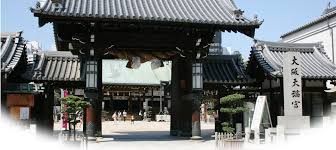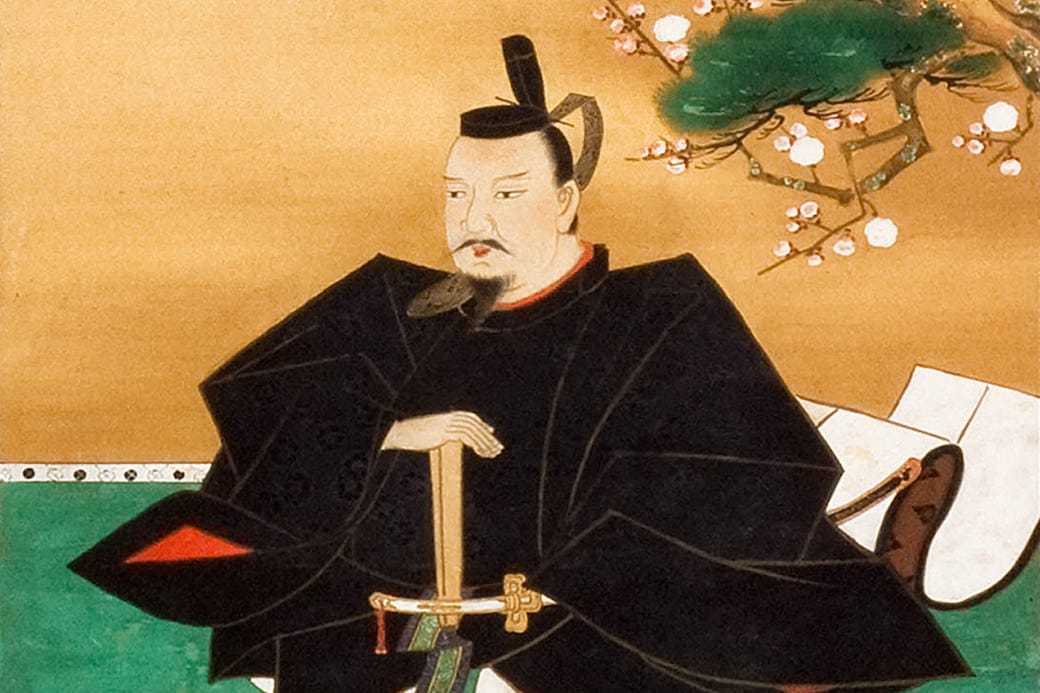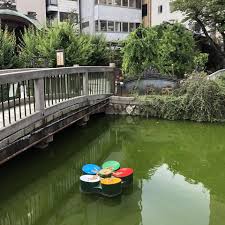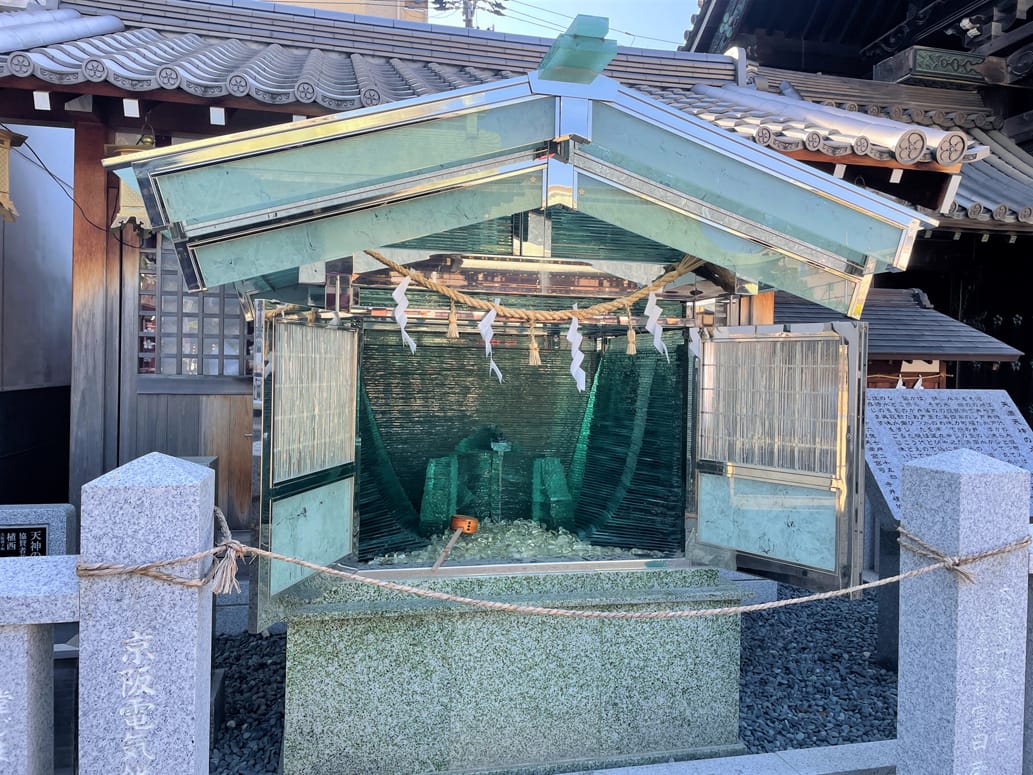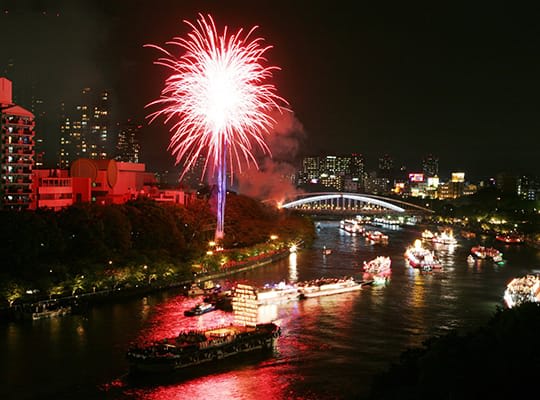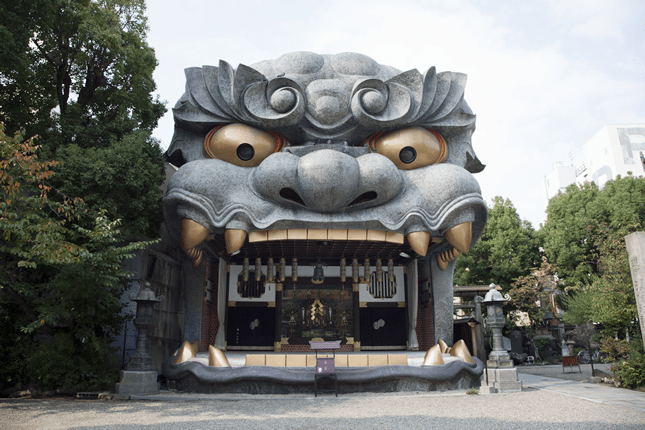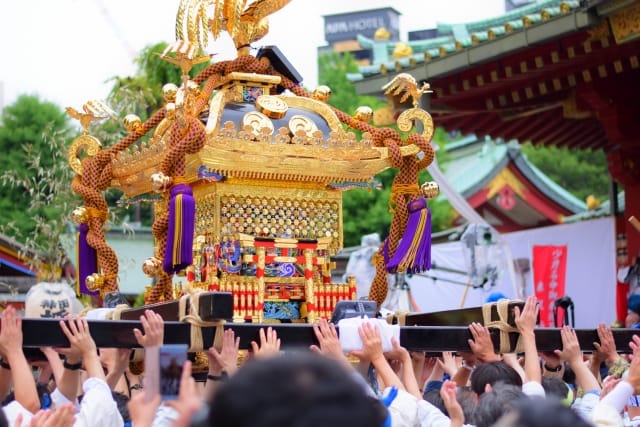Osaka Tenmangu Shrine Guide 2025: Tenma's Must-see Shrine
I love Osaka's culinary scene and visit at least three times every year. I've extensively updated this article to share must-visit tourist spots and new charms of Osaka that I discovered during my four research trips in 2024. I've also included the latest information for 2025 to make this article even more helpful.
Another reason for updating this article is the growing interest in tours that offer a deeper experience of Osaka. While Osaka is known for its developed food culture and numerous excellent restaurants, it can be challenging to find places that are truly beloved by locals.
This is why tours guided by local residents have become popular. In fact, our company Magical Trip's local-guided tours ranked No. 1 among all tours on Tripadvisor in 2024.

For those interested in Osaka's traditional spots and cultural places, consider joining the "5-Hour Osaka Highlights Bike Tour with Lunch," where expert local guides share their deep knowledge of the city while taking you to sites like Osaka Castle and Osaka Tenmangu Shrine. You'll experience not just the food culture but also get a rich sense of Osaka's history and traditions.
For those wanting to savor Osaka's exceptional cuisine, I recommend joining the "Osaka Local Foodie Tour in Dotonbori and Shinsekai." You can fully enjoy Osaka specialties like kushikatsu, takoyaki, and okonomiyaki with guidance from local residents.
I hope you'll be able to fully enjoy Osaka with no regrets by joining the Magical Trip tour!
Introduction
Osaka has long been known as "The Nation's Kitchen" (Tenka no daidokoro) and "The City of Kuidaore" (where people eat until they drop) because it gathered the finest ingredients from all over Japan. The city developed its unique food culture, including "Konamon" (flour-based foods) such as takoyaki and okonomiyaki, making it a famous culinary tourist destination in Japan.
Furthermore, Osaka is Japan's second major city after Tokyo. As the nearest port to Kyoto, the former capital of Japan, it has accumulated various Japanese cultural traditions.
The city of Osaka has developed while preserving its traditions. It has numerous shrines and temples built hundreds of years ago, deeply reflecting Japanese history. Among the many religious sites, Osaka Tenmangu stands out as a historic shrine that has watched over the people of Osaka for generations, making it a must-visit destination.
This article introduces the highlights and recommended seasons to visit Osaka Tenmangu.
If you are interested in Osaka Tenmangu Shrine, the icon of Japanese culture, you will definitely regret not enjoying Osaka Jo Castle, One of the Osaka's icons!
Enjoy the secrets and attractions of Osaka Castle along with the guide articles below, and Magical Trip's cycling tours are also featured below.

Osaka Tenmangu: One of Osaka's Premier Shrines Dedicated to the God of Learning
Osaka Tenmangu was founded in 949 during the elegant Heian period to deify Sugawara no Michizane, a scholar of that time, as a deity.
Osaka Tenmangu, home to the deity of learning and arts, has long been a spiritual anchor for locals and Osaka merchants.
During the Edo period, it was also a bustling entertainment venue. The shrine grounds once housed a theater, playing an important cultural role in Osaka.
Who is Sugawara no Michizane, the God of Learning?
Source:Dazaihu Tenmangu
Sugawara no Michizane, enshrined as the deity at Osaka Tenmangu, is famous as the God of Learning. Michizane was highly regarded for his scholarship, particularly in Kanshi (traditional Chinese poetry) and prose.
He is credited with fostering Japan's national culture (including hiragana and waka poetry) after proposing to end the Kentoshi missions to China, which had been sending envoys to learn Chinese technology, systems, and Buddhism since the Nara period.
Shrines dedicated to Michizane, called “Tenmangu shrines,” are numerous throughout Japan. Osaka Tenmangu Shrine is a representative example, as are Dazaifu Tenmangu Shrine in Fukuoka Prefecture and Kitano Tenmangu Shrine in Kyoto.
5 Selected Highlights and Attractions of Osaka Tenmangu
The "Main Hall" (Honden) - A Treasure of Osaka Citizens That Survived Wars
Source: Official website
The Main Hall of Osaka Tenmangu has been destroyed and rebuilt multiple times throughout its 1100+ year history. It served as the headquarters for the famous Japanese warlord Oda Nobunaga and was a battleground. During the Edo period, it was completely burned down during the "Oshio Heihachiro Rebellion." The current Main Hall was rebuilt afterward, faithfully reproducing the historical design. Despite being lost and rebuilt numerous times due to disasters and wars, it has always been revived as a symbol of Osaka's culture and faith. Major festivals like the Tenjin Festival (Tenjinsai) remain a source of pride for local residents and are considered important cultural heritage to be preserved.
The "Plum Blossom Hall" (Baikaden) - Designated as a National Important Cultural Property in 1999
Source Official website
Osaka Tenmangu features the Baikaden, designed in the Shinden-zukuri style (an architectural style incorporating Japanese culture based on Chinese palaces). The Baikaden was designated as a National Important Cultural Property about 25 years ago. The ceiling of the easternmost room features the most prestigious ceiling design called "Shinrintsuki nijuoriage kogumigoutenjo." Currently used as a wedding venue, it's usually closed to the public. When walking behind the building, only its copper-plated roof (Dougawarabuki), traditionally used for temples and shrines, is visible.
The "Main Gate" (Omote Ohmon) - Impressive with its Solemn Atmosphere and Grand Sacred Rope
Source: Official website
The main entrance to Osaka Tenmangu is the majestic Omote Ohmon. Unlike typical shrines with torii gates, Osaka Tenmangu has a massive temple-style gate, reflecting the historical "Shinbutsu-shugo" (fusion of Shinto and Buddhism) from the Heian to Edo periods. When passing through the Main Gate, look up to see the impressive sacred rope (Shimenawa) and colorful compass board (Hoiban). The sacred rope was donated from Tamatsukuri Tenmangu in Izumo. The combination of a Buddhist-style gate with a Shinto sacred rope is considered a remnant of the Shinbutsu-shugo era.
The "Hoshiai Bridge" - A Unique Wish-Making Spot Where You Can Throw "Wish Balls"
Source:Facebook Farm
In the northeast of Osaka Tenmangu is the Hoshiai Pond, where visitors can make wishes by throwing colored "wish balls" at plum blossom-shaped targets floating in the pond. The balls come in different colors representing different wishes: red for love, yellow for business prosperity, white for health, blue for arts and entertainment, green for studies, and gold for all wishes. For 500 yen, you can choose three balls. This unique wish-making spot offers an unforgettable experience.
The "Kurotsuchi Shrine" - Housing One of Osaka's Four Famous Spring Waters
Source:Rurubu
For those interested in tasting one of Osaka's historically significant waters, visit the Kurotsuchi Shrine located just right of the Main Gate. On the 1st, 10th, and 25th of each month, visitors can receive the power of the sacred water. It's one of the "Four Famous Springs of Osaka" (Osaka yonkashono kiyomizu), known for its exceptional quality and taste. The emerald-colored water house creates a mystical atmosphere as water cascades down. On opening days, visitors can purchase 500ml bottles (200 yen) of the spring water from the shrine office.
The Most Exciting Time at Osaka Tenmangu is During the Tenjin Festival Season
Every year around July 25th, Osaka Tenmangu holds the "Tenjin Festival" (Tenjinsai) to commemorate the death anniversary of Sugawara no Michizane. The Tenjin Festival is a major event that brings together 1.3 million people, including locals and tourists from both within Japan and abroad. As a festival enthusiast, here are my recommended ways to enjoy it:
* Rent a yukata
* Purchase official festival happi coats, umbrella dance parasols, and dragon dance T-shirts
* Watch the boat procession (Funatogyo) and fireworks from the tribute boats (Gubusen)
* View the boat procession, fireworks, and illuminated Osaka Castle from Tsushima Bridge or Hisho Bridge
* Sample Osaka cuisine while walking through Japan's longest shopping arcade near Osaka Tenmangu
It's guaranteed to be an unforgettable and exciting experience. Be sure to visit during the Tenjin Festival season to experience traditional Japanese culture firsthand.
The Tenjin Festival is One of Japan's Three Major Festivals
Source: Official website
The Tenjin Festival, counted as one of "Japan's Three Major Festivals," has over 1,000 years of history. The festival features impressive sights including the magnificent portable shrines (mikoshi) parading through Osaka's streets (Rikutogyo) and a procession of 100 boats along the river (Funatogyo).
The festival finale features about 5,000 fireworks. The scene created by the kagaribi (traditional lighting from the Nara period) during the boat procession, the handcrafted lanterns (chochin), and the fireworks illuminating the night sky creates a magical, otherworldly atmosphere.
February at Osaka Tenmangu is Also Recommended for Beautiful Plum Blossoms
Source:4 Travel
From mid-February to mid-March, plum (ume) blossoms, which herald the arrival of spring in Japan, reach their peak bloom. During this time, Osaka Tenmangu is decorated with plum blossoms and attracts more visitors than usual.
The deep pink plum blossoms create a stunning contrast against the majestic main shrine building. The elegant weeping plum trees and red and white plum blossoms are especially photogenic, making them popular subjects for Instagram posts.
During the Tenma Tenjin Plum Festival (typically mid-February to early March), bonsai plum trees (bonume) and swords (touken) are displayed. About 50 plum trees, including some over 200 years old, are exhibited, filling the venue with their sweet fragrance. Additionally, about 10 swords, including those associated with famous samurai like Minamoto no Yoshiie, are displayed, making it a must-see for sword enthusiasts.
Access to Osaka Tenmangu
Address: 2-1-8 Tenjinbashi, Kita-ku, Osaka
Access: Walking distance from Minamimorimachi Station (Subway Tanimachi Line/Sakaisuji Line) or Osaka Tenmangu Station (JR Tozai Line)
Hours: 9:00-17:00
Closed: Never
Phone: 06-6535-0025
Official Website: https://osakatemmangu.or.jp/
If you are interested in Shrines and Temples, check the article below! I summarized Shrines and Temples in Osaka I recommend and how I felt each Shrine (Temple).

Historical Temples and Shrines to Visit Along with Osaka Tenmangu in Osaka
Sumiyoshi Taisha

Sumiyoshi Taisha is the head shrine of approximately 2,300 Sumiyoshi shrines across Japan and has over 1,800 years of history. The main shrine building features the "Sumiyoshi-zukuri" architectural style, which is the oldest style in shrine architecture and is designated as a National Treasure.
At Sumiyoshi Taisha, you can experience a thrilling walk across the "Sorihashi" (arched bridge). With a maximum incline of about 48 degrees, it's quite steep - simply crossing it is said to provide spiritual purification. Please watch your step and cross carefully.
When the vermillion handrails reflect on the water surface, they form a circle that resembles a drum. Don't just cross the bridge - try viewing it from the side and taking photos as well.
Address: 2-9-89 Sumiyoshi, Sumiyoshi-ku, Osaka
Hours: 6:00-17:00 (October-March: 6:30-17:00)
Phone: 06-6672-0753
Official Website: https://www.sumiyoshitaisha.net/grounds/highlights.html
If you are interested in Sumiyoshi Taisha Shrine, check the article below! I summarized in more details and how I felt there.

Shitennoji Temple
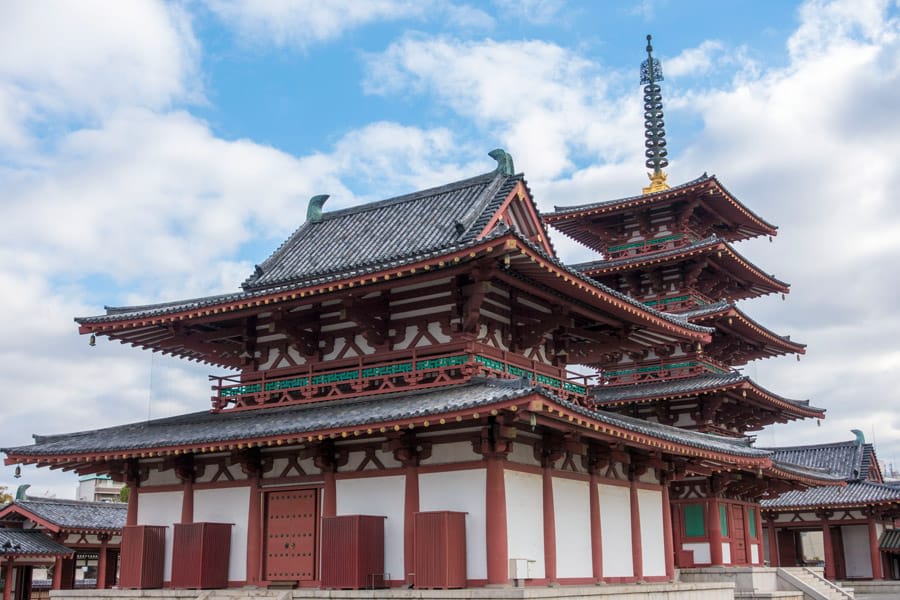
Shitennoji was founded by Prince Shotoku, one of the most famous political figures in ancient Japanese history. It is considered one of the oldest temples in Japan.
At the Niomon Gate on the temple's south side, you'll find two imposing Nio guardian statues (one blue and one red) standing about 5.3 meters tall - among the largest in Japan.
If you're seeking good fortune at Japan's oldest temple, try lifting the "Omokaru Jizo" statue. After making a wish, try lifting the statue - if it feels lighter than expected, your wish will come true. If it feels heavy, it's not yet time for your wish to be granted.
It's truly a mysterious experience worth trying.
Address: 1-11-18 Shitennoji, Tennoji-ku, Osaka
Hours: 24 hours (Main halls, central precinct, and gardens: 8:30-16:00)
Phone: 06-6771-0066
Official Website: https://www.shitennoji.or.jp/admission.html
Namba Yasaka Shrine
Source:Osaka City Official website
Namba Yasaka Shrine was built about 1,700 years ago to protect the region during an epidemic. Its famous Lion Shrine building stands 12m tall, 11m wide, and 10m deep, making for an impressive sight. Many visitors from Japan and abroad come specifically to see this lion shrine.
The lion's golden eyes and 24 teeth are made of brass and shine beautifully, enhancing its imposing presence. Don't miss the ceiling, which features hand-carved phoenix (Houou) patterns throughout.
Address: 2-9-19 Motomachi, Naniwa-ku, Osaka
Hours: 9:00-17:00
Phone: 06-6641-1149
Official Website: https://nambayasaka.jp/
Hozenji Temple & Hozenji Yokocho
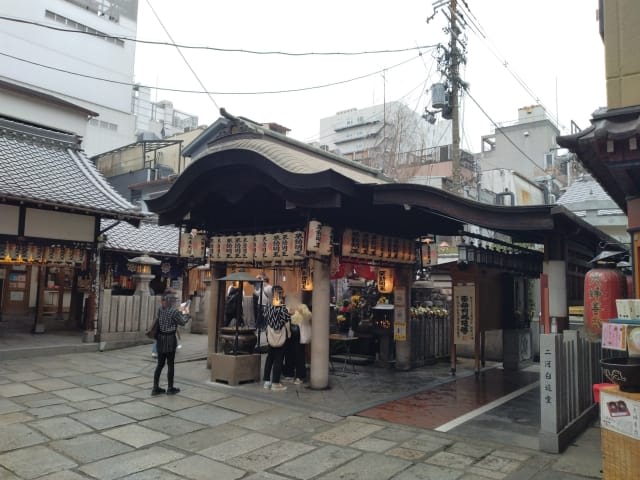
In Osaka's Minami entertainment district, just a step away from the main street, Hozenji Temple features a unique "Mizukake Fudo" statue covered in green moss. People pray for various blessings including healing from illness, business success, and relationship connections by sprinkling water on the statue. This is a special experience you can only have here.
Two 80-meter-long alleys extend east and west from the temple grounds, lined with traditional Japanese restaurants, okonomiyaki shops, and kushikatsu establishments. This area is known as "Hozenji Yokocho."
In Hozenji Yokocho, be sure to try the zenzai (sweet red bean soup) at the shop featured in the famous Japanese novel "Meoto Zenzai." It's served in two bowls, making it perfect to share with someone special.
Address: 1-2-16 Namba, Chuo-ku, Osaka
Hours: 24 hours (Amulet office: 10:00-18:00)
Phone: 06-6211-4152
Official Website: https://www.houzenji.jp/
Imamiya Ebisu Shrine

Imamiya Ebisu Shrine is famous as a deity of business prosperity. It is said to have been established over 1,400 years ago when Prince Shotoku built Tennoji Temple and enshrined this deity as the western guardian.
The shrine's torii gate is unique in Japan, featuring two smaller torii gates on either side of the main gate. It's definitely worth photographing.
As someone who collects goshuin (shrine/temple stamps), I particularly recommend getting one here. While most temple and shrine stamps use kanji characters, this shrine's stamp uniquely uses hiragana for "Ebisu Daijin." Consider taking home this unusual goshuin as a souvenir from your Japan trip.
Address: 1-6-10 Ebisunishi, Naniwa-ku, Osaka
Hours: 6:00-17:00 (Amulets and goshuin available 9:00-17:00)
Phone: 06-6643-0150
Official Website: https://www.imamiya-ebisu.jp/
